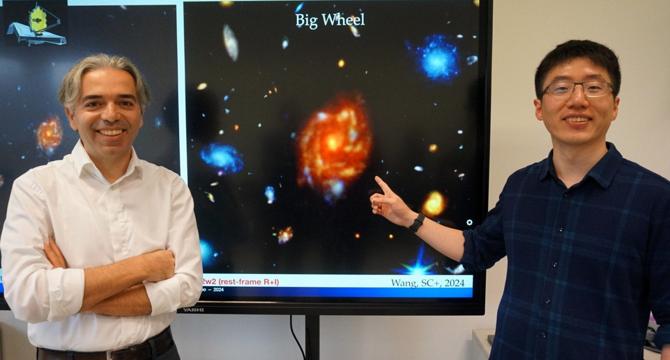Brighter Side of News
4w
262

Image Credit: Brighter Side of News
Giant galaxy that shouldn’t exist discovered from the early universe
- A colossal disk-shaped galaxy, nicknamed the “Big Wheel,” challenges current theories of galaxy formation by existing just two billion years after the Big Bang.
- The galaxy, comparable in size to the Milky Way today, suggests that galaxies might have formed and grown faster in the early universe than previously thought.
- The Big Wheel, spanning nearly 98,000 light-years across, defies the assumption that galaxies of such scale required most of the universe's age to reach their dimensions.
- Analysis by researchers from the University of Milano-Bicocca using JWST and other telescopes confirmed the presence of this early giant galaxy.
- The Big Wheel's unique spiral arms and young star clusters observed indicate rapid expansion around 11–12 billion light-years away.
- Questioning current cosmological models, the early existence of such a massive disk galaxy prompts theories on its fast formation and potential environmental influences.
- Difficulties in explaining the Big Wheel's presence early in the cosmos raise challenges for existing galaxy formation theories.
- Future studies aim to locate more massive disks in the early universe to discern patterns and potentially revise understandings of galaxy evolution.
- The Big Wheel's discovery could reshape scientific views on massive galaxy formation, offering insights into early universe dynamics.
- Comparative analysis highlights the Big Wheel Galaxy's size, structure, and unique features when juxtaposed with well-known galaxies like the Milky Way and M87.
Read Full Article
15 Likes
For uninterrupted reading, download the app